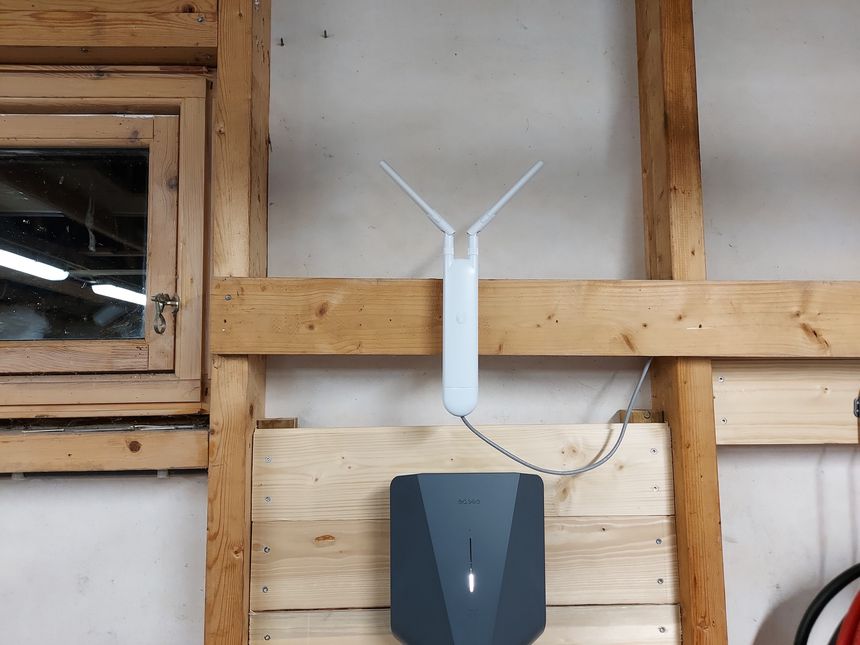Ever since I ran a underground CAT6 to my garage — my Unifi UAP-AC-M access point have been acting strange…
I initially noticed that whenever I was close to the garage; I would loose internet connectivity for a few seconds. At first I just thought it was an area with poor coverage, but looking at the signal strengths that didn’t make any sense.
Table of contents
Investigating
When I started to look more closely at the problem — I noticed that I would loose connectivity whenever my phone connected to the Unifi UAP-AC-M 5 GHz band. Then, after a few seconds, the phone would connect to another AP and connectivity was restored.
This lead me to believe that there was something wrong with the 5 GHz band, and that the 2.4 GHz band was fine (it wasn’t).
This was right around the time I had upgraded the firmware on the Unifi UAP-AC-M to 5.x, so my initial suspicion was a firmware bug.
I took the AP down, connected it in my home office to test, and after using it for a week I had experienced no connectivity issues what so ever — strange…
Trial and error
I took the AP back out to the garage and connected it to the D-Link DGS-1210-28P PoE switch I have there. And the problem was back.
Then I thought maybe it was mounted to close to the garage door, which is metal, causing reflections and interference. I moved it, but the problem remained.
Maybe the power from the PoE switch was the problem! I tried powering it with the PoE injector it came with, but the problem remained.
Did it really work after I moved it inside? I took it back in just to confirm, and yes. It did work inside, but not in the garage. So what was different? The switch!
I mounted the AP in the garage again, but bypassed the switch. And now it worked without any problems. So why was the switch causing the 5 GHz band to fail? At this point I still thought that the 2.4 GHz band worked (it didn’t).
The solution
I posted on the r/HomeNetworking subreddit, and someone asked if the access point had VLANs. Maybe the switch was blocking it?
OMG! Of course, the VLANs! All my wireless networks use VLANs. I’m used to the MikroTik switches, which allow all VLAN IDs by default. But most switches don’t do that.

And sure enough, I enabled the tagged VLAN IDs on all ports and suddenly it started working 🙂
I found it further confusing that I was able to communicate with the access point from the Unifi controller just fine. This was because I haven’t (yet) set up a management VLAN, so that traffic wasn’t blocked by the switch.
Takeaways
- Question what you think you know already, don’t assume
- Keep a log of when devices are firmware upgraded, or you make changes to the network
- Also keep track of things you have tried, and the result, during the troubleshooting
- Remember that switches don’t usually pass VLANs which haven’t been defined
Damnit, I just spent all evening trying to figure out why VLANs in my virtual @vyos_dev router wasn’t working. Only to find that the problem was that I had forgot to define the VLAN in my Unifi switch, and it refused the tagged traffic 😒
1:10 AM · Jul 2, 2021 · Twitter
Last commit 2024-11-11, with message: Add lots of tags to posts.

